|
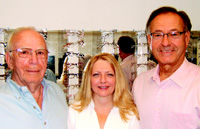
Arthur Jankolovits, president and CEO of New York Eye, right, with senior executive Charles Schmall, left, and Shannon Johnson, VP of product support, center.
|
By Marge Axelrad: Editorial Director
AMITYVILLE, N.Y.—Sometimes things all come together, right time, right place.
And New York Eye is one company which is experiencing the benefits of its collective efforts over the past 10 years to transform its eyewear collections and programs into a modern portfolio of products and services, targeting the quality, moderate segment of the market that many customers and ECPs are seeking right now.
Arthur Jankolovits, president and CEO of New York Eye/Hart Specialties, Inc. has noticed an upswell in the company’s business from the beginning of this year. He attributes the surge in business with the company’s current accounts and new customers to the new priorities of the consumer and a “managed care effect,” that’s driving people to utilize and stay, whenever possible, within the limits of their managed vision care coverage for their eyewear.
|

New York Eye’s portfolio of collections include Mark Hunter, above and Urban Edge, at left.
|
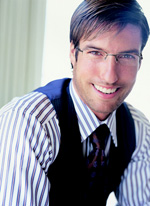
“In essence, ECPs have very near to the same number of patients coming in compared to previous years, but many ECPs are selling eyewear in general at an average price that’s a bit lower than in prior periods,” noted Jankolovits. “Our upper licensed brands, our moderate and economy collections are extremely strong now as people need quality, fashionable, durable and well-warrantied products.” All of the company’s active customers receive a two-year money-back warranty on frames.
Said Jankolovits, “People are living on their income, watching their expenses, not using credit cards as much. Most of them don’t want to ‘finance’ $200 on their eyeglasses today.”
New York Eye’s collections include a range of both licensed brands, like Woolrich, Joan Collins, Seventeen, Coleman and Pepsi as well as a series of brands developed in-house to specifically target key customer niches. Valerie Spencer, Mark Hunter, Taka and Urban Edge are some of these which are experiencing record sales this year, Jankolovits reported.
The company, which originated as Hart Specialties some 30 years ago on the closeout side of the business has evolved its scope considerably since then. The company has been emphasizing its new and modern New York Eye name and image since 1994 in a number of ways. These include a brand new contemporary exhibition booth, an environment the company debuted at Vision Expo East earlier this year and will use again at the upcoming Vision Expo West. Also, it regularly supports its customers through sleek images, including multi-use postcards for each of its collections, in addition to its catalogs for each brand target.
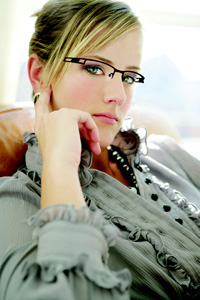 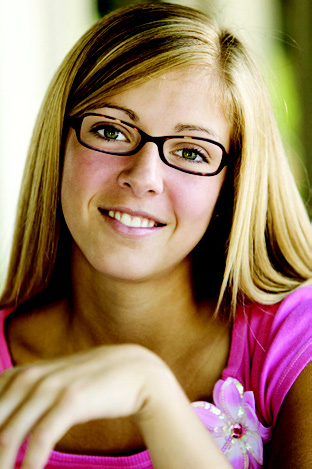 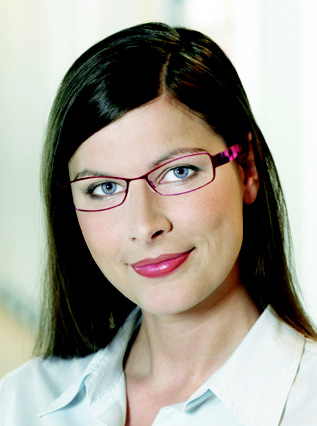
Other key brands for New York Eye include (l to r) Taka, Seventeen, and Valerie Spencer. |
Noted Charles Schmall, a senior executive of New York Eye with a wealth of experience in the eyewear industry, “It’s a matter of changing perceptions, one of the hardest things a company can do. The key to change is making a legitimate product with style, quality and value and I think that’s now been accepted. Our business keeps growing.”
Added Jankolovits, “We take a ‘good, better, best’ approach. In many cases, we have focused on niches that other companies have ignored, like classic women’s and classic men’s lines. But we’ve also developed exceptional collections in lifestyle materials like stainless and titanium and fashion plastics that hit the style preferences of a range of younger and contemporary customers.”
The company has marketed its Joan Collins brand for about eight years, the well-known Woolrich brand for about 12 years. Coleman, started a few years ago. Seventeen, which was launched in March 2009, targets teens and contemporary young women with style.
But Jankolovits, along with Shannon Johnson, VP product support, point to about three years ago when New York Eye added some significant new house brands. Valerie Spencer and Mark Hunter, Jankolovits noted, “went into the demographic that has been owned and controlled by Ralph Lauren, Calvin Klein and DKNY—they succeed in going after young professionals who have sophisticated tastes. At price points to the dispenser between about $20 and $40, the collections offer great value. These two collections amount to about 20 percent of our sales today. Other in-house brands include Taka, which is modern and contemporary, and Urban Edge, focusing on edgy styles for urban-city customers.”
|
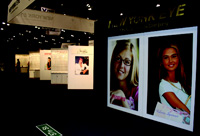
The company unveiled a brand new booth environment for its collections and will feature the new look again at Vision Expo West.
|
Johnson, who has been with the company for 15 years, noted, “To develop these products, it’s a slightly longer process for us, there is more detail, and we are using a range of higher-end factories. And we’re bringing out many more active styles on a regular basis to serve the needs of our accounts.”
The change is evident across New York Eye in terms of its average sale—the company has experienced a 40 percent increase in the average price of a frame sold—reflecting the new mix of purchases from its customers.
Today, the company sells some three million units per year, Jankolovits said, plus an additional 6 million cases through another part of the company’s business. And while the company’s business is primarily with independents, it also does work with a range of regional and large chains.
Schmall also points to New York Eye’s dedicated, single sales force as another significant asset. The company has 25 reps covering exclusive geographic territories. Future expansion is planned. Jan Phillips and Lucy Korn are the company’s two vice presidents of sales. Each oversee reps and also handle some key accounts. Noted Phillips, “I find patients are looking for value. If they have insurance they either want to stay within their allowance or are willing to pay a little more.”
Added Korn, “Many of my ECPs tell me that there is a growing need for the mid-range product, as well as a need to design a frame board with more price level tiers. The way that their patients buy is different today. ”
Jankolovits said, “We’re seeing the results of our past efforts now, but the major point is how New York Eye fits into today’s economy. The psychology of the period, and what appears to be the psychology moving forward in a slow economic recovery, gives our price points and our brands a very significant added value to the industry today.” ■